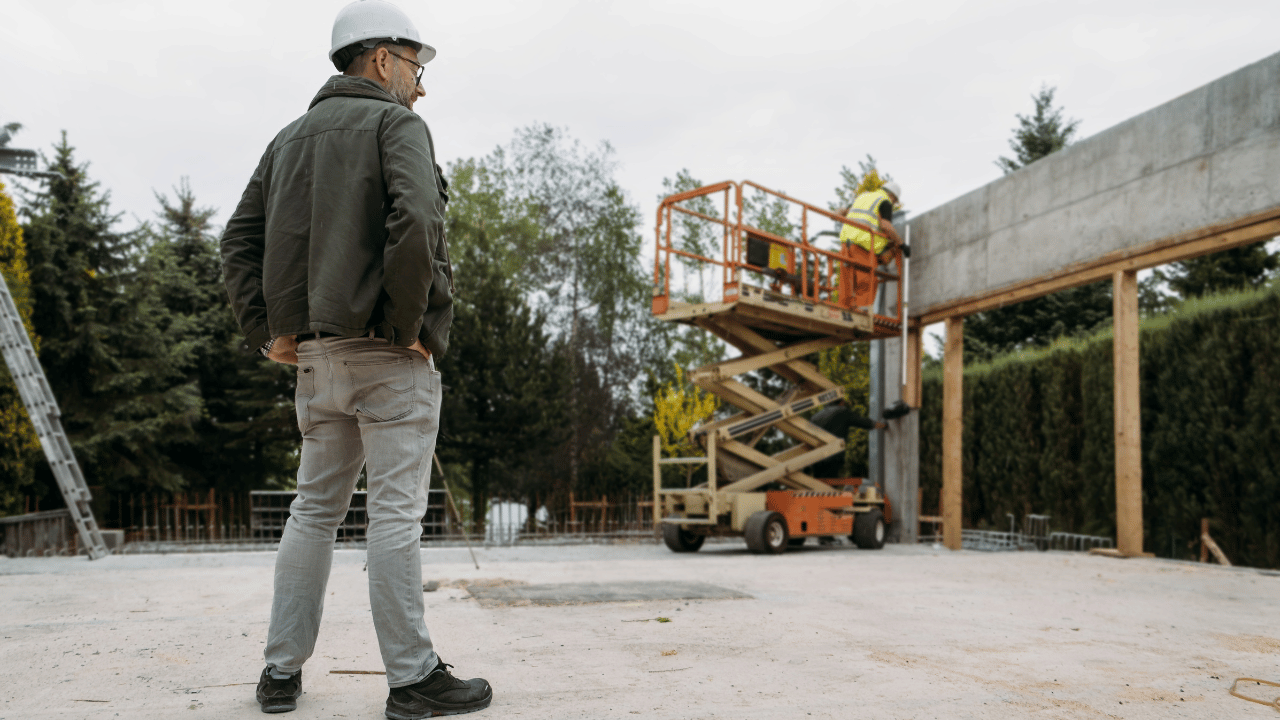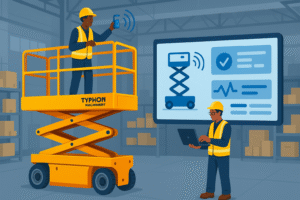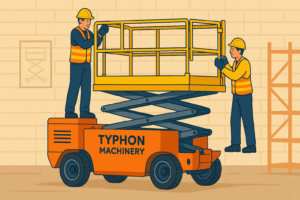Start Scissor Lift Maintenance Frequently to Avoid Expensive Repairs
Scissor lifts are indispensable in manufacturing, construction, and maintenance. These lifting platforms enable employees to powerfully and securely access high areas. On sites and facilities, daily cleaning as well as electrical installation call for scissor lifts.
Without regular maintenance, scissors lifts might lose efficiency and safety. Preventive maintenance finds problems before they start to be costly or destructive. Excellent operating condition of every component increases the lifetime and efficiency of the equipment. This post will go over the need for scissor lift maintenance as well as the dangers of ignoring it and how to start an extensive program. For worker safety and risk lowering, shared will be best practices.
Know Scissor Lift Maintenance
Repair and maintenance of a scissor lift promotes efficiency and safety. This includes several tasks to fulfill safety rules, prolong the life of equipment, and maintain its excellent condition. Maintenance includes inspections, servicing, and issue repairs. Timing fixes help operators boost output and save expenses.
Regular maintenance is required of scissor lift hydraulic, mechanical, electrical, battery, tire, and structural systems. Ignoring the hydraulic system—which raises and lowers—may lead to performance loss or breakdown. Regular electrical system checkups guarantee that all buttons, switches, and alarms operate as they should; failures might compromise safety. Furthermore, avoided are necessary job failures by battery health monitoring.
Fundamental Parts Regular Maintenance
The performance of scissor lift depends on regular maintenance of these fundamental parts. On construction sites lacking enough traction and restrict mobility, old tires might be dangerous. Search for structural elements that could indicate wear and damage compromising stability or usage. In fast-paced situations specifically, mechanical failure downtime is particularly critical; well-maintained scissor lifts assist to reduce it.
Companies may improve reliability and safety by first giving scissor lift maintenance top importance and considering important components. Being proactive helps employees be safer and maintains less costly maintenance costs. Daily maintenance plans enhance resource allocation and production, therefore turning lifting equipment into a project-enabling asset.
Common maintenance Neglected Issues
Scissor lifts without maintenance might develop mechanical problems endangering efficiency and safety. Common problems include battery, hydrostatic system, lift control system, platform deterioration. Untreated hydraulic fluid leaks might cause lift failure that puts operators and others risk. Fast power loss during operation might result from an unknown electrical issue.
Ignorance of maintenance might damage tools and call for expensive repairs. Little problems could become major failures needing overhauls or component replacements without preventive maintenance. Ignoring minor corrosion might result in structural integrity loss in lift frames and thousands of dollar in component replacement costs. Significant repairs instead of regular maintenance cause these problems to keep equipment off-line longer, therefore lowering corporate downtime.
Scissor lift safety events may also cause major financial losses outside of repair costs. Businesses with malfunctioning equipment might be punished for safety breaches under audits or inspections. Scaffold failures could lead to legal problems, lost output, and damage of reputation. Strong maintenance policies are thus essential to guarantee staff safety and corporate confidence and help to prevent these costly consequences.
Realizing the basic mechanical defects caused by negligence stresses scissor lift maintenance in every firm. Regular maintenance of durable lifting equipment boosts productivity, prevents expensive repairs, and promotes safer workplaces.
Ignorance in Maintenance: Costs
One building scenario shows how costly ignoring scissor lift maintenance can be. A medium-sized general contractor neglected scissor lift maintenance. Without oil level monitoring and filter maintenance, one lift failed unexpectedly during a key operation. The lift was off for two weeks while parts were ordered and repairs were made. This outage cost $5,000 to repair, but project delays and lost earnings totaled $50,000.
One more such is a facility management business that maintains interior spaces. The crew ignored battery and power connection examinations on its aging scissor lifts. During a major floor repair, workers had to stop until replacements arrived when the battery of lift failed mid-operation. Stopping work caused project delays and customer discontent. Fixing this issue cost more over $30,000 plus late fines.
These case studies show how neglecting scissor lift maintenance rules may interrupt projects and damage client relationships. Proactive maintenance might have reduced these unexpected costs and results.
Analysis of scissor lift maintenance that caused substantial repair costs and operating delays shows why regular equipment maintenance should be part of the operational plan. Methodical maintenance improves performance and reduces costs.
Schedule Active Maintenance Benefits
Careful scissor lift maintenance extends equipment life. Frequent visits detect and fix small issues before they escalate. Hydraulic hose or seal degeneration may need costly replacements or repairs during routine inspections. Maintenance best practices help organizations save capital expenditures by extending industrial equipment life.
Good maintenance extends equipment life and improves worker safety. Maintenance improves scissor lift efficiency, reducing mechanical failure. Insecure guardrails may risk operator safety and raise corporate insurance responsibility. Companies may reduce accidents and downtime by prioritizing inspections and risk resolution during regular maintenance.
A strong maintenance program may reduce operational expenses over time. Facilities may minimize costly and inefficient unscheduled repairs using structured techniques. Maintenance-investing firms had fewer equipment failures than reactive ones. Documenting and tracking maintenance chores using available resources helps personnel learn from historical performance data, demonstrating a commitment to safety and equipment integrity.
Scissor Lift Maintenance Lifespan Improvement
Ensuring appropriate scissor lift improves lifespan of equipment and performance. Designed for the daily, weekly, monthly maintenance plans for the equipment, operators should check operating condition, hoses, safety devices, control systems before every usage. Looking for hydraulic fluid leaks or unusual wear might assist to prevent small mechanical problems from becoming more major ones.
Weekly maintenance also includes diesel lift engine oil levels and electric lift battery performance and charge levels. Inspection of tire quality and wheel alignment helps to reduce unequal wear. Including these elements in a checklist might prevent work site equipment malfunction. Comments included in maintenance records enable operators to promote collective responsibility.
Platform controllers and stabilizers need regular exhaustive inspections. We look at structural integrity, electrical connections, and safety assurance. A monthly review confirms OSHA safety regulations and points out likely failure areas. Using well defined checklists helps unit condition assessments to becoming more consistent.
Pre- and post-use checks are crucial to scissor lift maintenance. Pre-use checks prevent operational issues, whereas post-use assessments identify task-related wear. Every worker knowing their scissor lift responsibilities would promote safe work practices, decreasing maintenance costs and downtime for firms and workers.
Best Practices for Maintenance Program Development
Effective scissor lift maintenance calls both frequent examination and thoroughness. Create the maintenance schedule first considering manufacturer recommendations, running hours, and usage. Extreme temperatures or heavy dust might call for more regular scissor lift component checks. By calendarizing these tasks, one guarantees no maintenance is overlooked.
Create schedules using technology for digital maintenance management. CMMS helps you monitor maintenance. Common in these systems are automatic inspection reminders, component warranties, and safety compliance documentation. Real-time performance statistics and maintenance checklists provided by mobile applications help operators on-site to enhance team accountability.
All pertinent staff members should get inclusive training if we want to increase maintenance program compliance. Operators pick up values of workplace safety and respect of inspections. Additionally helping staff members recall equipment maintenance chores are printed quick-reference instructions and infographics.
Review of regular maintenance logs might reveal operational flaws or inefficiencies. Should regular inspections ignore components, repairs, team organization, or more frequent checks, additional ones may be needed depending on standard check-ups. By improving this procedure, businesses may avoid downtime and guard equipment integrity.
Training on Staff Equipment Care
Operators must be correctly taught if we want to ensure scissor lift longevity and safety. Operators of scissor lifts have to be aware of their methods, strengths, and weaknesses. Providing rigorous equipment usage, safety, and maintenance training enables businesses to prevent mechanical failures and disasters. Imagine a planned onboarding program with extensive policies and practical new hire training courses.
Maintenance of a scissors lift calls some thought. Updated safety rules and equipment maintenance best practices should be part of regular refresher training. Realistic training scenarios offered by simulation technology might allow operators without jeopardizing people or equipment. Buddies, in which seasoned operators mentor less experienced users, encourage equipment maintenance and instruction.
Signs alerting site visitors about scissor lift maintenance Check hydraulic hose wear and battery levels first thing in morning. Simple access to these technologies motivates operational knowledge retention and worker responsibility.
Hence, Frequent Maintenance are Mandatory for Longer Success
A profitable operating plan requires frequent scissor lift maintenance. Prevention decreases mechanical failures, cutting repair costs and project delays. Facility operators and construction managers may improve equipment lifetime, safety, and productivity by following maintenance standards.
Scissor lift maintenance must be prioritized in company. Staff training on equipment use and maintenance schedules may improve resource management. This protects investments and improves workplace safety.





